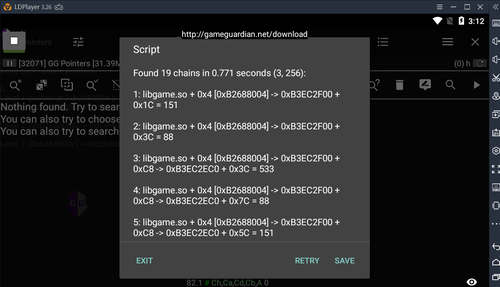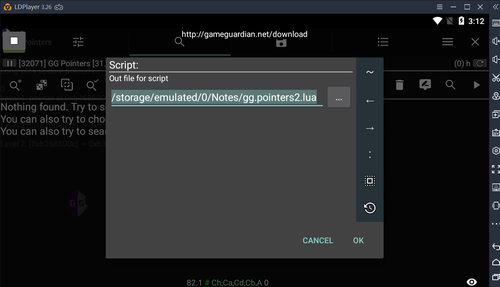About This File
Script to search for chains of pointers.
Beta version.
The script searches for pointer chains with a given depth and maximum offset to the .data or .bss regions.
For found chains, you can generate a script that will restore the search results for these chains.
Video:
Chainer: search and restore pointers chains - GameGuardian (#8cfynel1)
https://gameguardian.net/forum/search/?q=chainer&type=gallery_image&nodes=2
What's New in Version 0.2 See changelog
Released
No changelog available for this version.





Recommended Comments
Create an account or sign in to comment
You need to be a member in order to leave a comment
Create an account
Sign up for a new account in our community. It's easy!
Register a new accountSign in
Already have an account? Sign in here.
Sign In Now